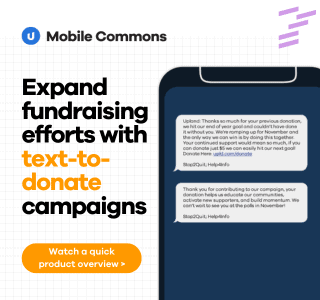In a global emergency, even the most steadfast mobile messaging programs must change course.
While many marketers may pause their mobile messaging efforts entirely during times like these, nonprofits and other organizations on the frontlines must kick their programs into high-gear to communicate with their communities during a time when it matters most.
In “Front Line Support Through Mobile Communications,” part of Upland’s Connected Through Change webinar series, we discussed how nonprofits, health organizations, and government services can turn to mobile messaging to convey critical information at critical times.
Here are four quick takeaways from the webinar:
1) Adjust your messaging to the situation.
To ensure your audience stays informed during this time, it’s important to keep them engaged. However, the things that typically engage your audience may not be as relevant – or even appropriate. Take time to consider the situation, understand your audience’s needs, and adjust your message accordingly.
2) Coordinate mobile messaging with your other channels.
Mobile messaging is fast, far-reaching, and allows two-way conversations, making it a critical channel for emergency situations. However, mobile messaging is at its best when it works in tandem with your other channels. For instance, if you’ve created a new webpage to communicate your emergency updates, you can send the URL through SMS and email. Likewise, if you primarily communicate with your community via email, you can use email to promote your mobile CTA, allowing audiences to stay up-to-date more efficiently through mobile messaging.
3) Get creative with your mobile messaging strategy.
Mobile messaging is an adaptable channel, so as you adapt your strategy, look for new ways to engage your mobile audience. Pivot your mobile messaging strategy to connect your audiences with emergency resources, promote virtual events, or raise funds for an emergency relief nonprofit. You can even use mobile messaging internally to coordinate and communicate with your employees.
4) Don’t forget your mobile messaging best practices.
Clear and concise messaging are never more important than when you have important information to convey. Make sure your messages are easy to understand, use active verbs, and avoid “text speak.” When it comes to tone, focus on creating messaging that is professional, yet friendly.
For more ways to stay connected through change and empower your front lines with mobile messaging, watch our latest webinar here.


